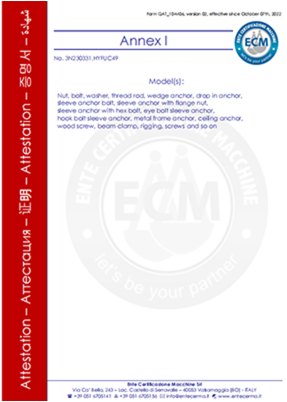Nov . 27, 2024 09:08 Back to list
Wall Bolt Installation Guide for Secure and Reliable Fixings
Understanding Wall Bolt Fixings A Comprehensive Guide
Wall bolt fixings, often simply referred to as wall bolts, are a vital component in the realm of construction and home improvement. Their primary function is to provide robust support for various fixtures and fittings mounted on walls, making them indispensable for both structural integrity and aesthetic appeal. This article aims to delve into the different types of wall bolt fixings, their applications, installation procedures, and considerations for selecting the right type for your project.
Types of Wall Bolt Fixings
Wall bolts come in various types, each designed to suit different applications and materials. The most common types include
1. Expansion Bolts These are designed for use in masonry and concrete. Expansion bolts consist of a bolt and a sleeve that expands when the bolt is tightened, anchoring securely within a hole drilled in the wall. They are ideal for heavy-duty applications where considerable load resistance is required.
2. Chemical Anchors Also known as resin anchors, these fixings use a chemical adhesive to bond the bolt to the wall. This method is particularly effective for securing objects in masonry or concrete, as it provides a strong hold under various conditions, including seismic activity.
3. Wedge Anchors These are similar to expansion bolts but are typically larger and used for more substantial applications. Wedge anchors provide a significant amount of holding power, making them suitable for securing posts, sign brackets, and heavy equipment.
4. Sleeve Anchors Sleeve anchors are versatile and can be used in a variety of base materials, including concrete, brick, and block. The anchor's sleeve expands against the walls of the hole upon tightening, making it suitable for medium-duty applications.
5. Toggle Bolts These fixings are perfect for hollow wall applications, such as drywall. They consist of a bolt and a spring-loaded toggle that opens up once inserted into the wall, providing a stable anchor for lighter fixtures like shelves and pictures.
Applications of Wall Bolt Fixings
Wall bolt fixings can be used in numerous applications, ranging from mounting heavy shelves to securing structural elements such as beams
. Common uses include- Mounting Shelves Heavy-duty shelves can be securely mounted on walls using expansion bolts or sleeve anchors, ensuring they can hold substantial weight without sagging or falling.
wall bolt fixing

- Hanging Mirrors and Artwork For large or heavy mirrors and artwork, toggle bolts or expansion bolts are often employed to provide the necessary support.
- Fastening Equipment In both industrial and commercial settings, wall bolts are used to secure machinery, signage, and other equipment to walls, ensuring they remain in place under various conditions.
- Construction Projects Wall bolts are crucial in construction for securing structural components, such as walls and frames, to their foundation or adjacent structures.
Installation Procedure
Installing wall bolt fixings might seem straightforward, but following the correct procedure is essential for ensuring a secure fit
1. Select the Right Fixing Determine the load requirements and the type of wall you are working with to choose the appropriate fixing.
2. Drill the Hole Using the right drill bit, drill a hole into the wall material to the appropriate depth for the fixing being used.
3. Insert the Bolt For expansion bolts, insert the bolt into the pre-drilled hole. For sleeve anchors, ensure the sleeve is positioned correctly.
4. Tighten the Fixing Use a wrench or drill to tighten the bolt until it is securely fastened. Be cautious not to overtighten, as this can damage the anchor or the wall.
5. Test the Installation Once installed, test the fixing by applying slight pressure to ensure it can handle the intended load without movement or instability.
Conclusion
Understanding wall bolt fixings is crucial for anyone involved in construction, DIY projects, or home improvement. With various types available, each suited for different applications, choosing the right one can drastically affect the durability and safety of your installations. Proper installation not only enhances the aesthetic appeal of your space but also ensures that everything from shelves to heavy machinery stays securely in place. By following best practices and taking the time to select the appropriate fixings, you can achieve a reliable and long-lasting result in your projects.


